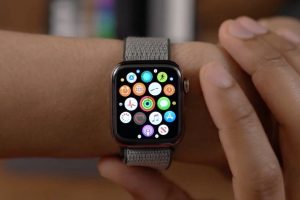The last 12 months has represented an interesting period for Apple, as the brand celebrated the 10th anniversary of the original iPhone. The technology giants also released three new iPhones during this period, including revolutionary ‘X’ model complete with facial recognition technology, wireless technology and an edge-to-edge Super Retina Display.
However, issues surrounding the cost of manufacturing the iPhone X and lower than expected sales have dampened the enthusiasm surrounding this handset, while Apple’s share of the global marketplace declined by 1.3% in the year ending December 2017.
These challenges have cast some doubt over Apple’s plans for 2018, although the brand is still poised to release a number of new handsets in coming autumn. Below, we’ll take a quick look at Apple’s most likely product launches in the smartphone sector:
The Next Generation iPhone X
Despite the Fonehouse’s best iPhone X pay monthly deals having helped to reduce the average cost of procuring this handset, the associated manufacturing costs have largely required Apple to maintain a hefty retail price of £999 in order to achieve profitability.
This has reportedly led to reduced sales volumes across the globe, but this does not appear to have deterred the brand from pressing ahead with the development of the next generation range.
More specifically, Apple are thought to be designing a larger iPhone X model with a 6.5-inch OLED display, as they look to follow the recent trend established with the iPhone 6, 7 and 8 handsets. This will probably be called the iPhone X Plus, with the reputable Mark Gurman at Bloomberg having confirmed these rumours in recent times.
While Gurman believes that this plus-sized model will offer all of the multitasking phablet attributes that Millennials crave, however, Apple will also focus on producing a handset that is more affordable. This may ultimately mean that they create an iteration that utilises LCD display technology rather than the more costly OLED alternative, but given the importance of this as a unique selling point the brand may need to identify different savings from a manufacturing perspective.
Alongside the plus-sized iPhone X, Apple may also release a more affordable of the original 10th anniversary iPhone handset this year. This would most likely boast a 5.8 or a 6.1-inch LCD display according the initial rumours, while the recommended retail price would most likely be in the region of between £700 and £800.
Introducing the More Affordable iPhone SE2
These are two of three potential Apple smartphone launches in 2018, with the brand set to follow a similar strategy to last year. The third handset is reported to be the affordable iPhone SE2, which is a compact handset that could well hit the market during the summer and ahead of any new iPhone X models.
The antithesis to the large and advanced iPhone X handset, the original SE model benefited from a huge and surprising level of consumer demand when it was released back in 2015, with its small, 4-inch LCD display, competitive range of features and affordable retail price of around £200.
A sequel has been discussed for more than a year now, with initial filings and patents having apparently been received by the EEC (Eurasian Economic Commission), which serves as an official authority for the Russian marketplace. Such reports have proved reliable in the past, providing a precursor for the respective launches of Apple MacBooks and this years’ iPad device.
The launch of a new, SE2 handset will certainly increase Apple’s market range, while providing a popular, entry-level device that has appeal in the mass market. This smartphone is also the most likely to hit the market at some point in 2018, with many expecting it to be formally unveiled Apple’s WWDC event on June 4th.
The Last Word
By launching three devices of this type, Apple is clearly making a strategic statement in the current market climate.
After losing some of its global market share to Android and cost-effective Chinese operators, the brand is responding by diversifying its range, while also tackling the cost issues associated with the iPhone X by creating more affordable alternatives with similar design principles.
The development of a larger iPhone X (and a more affordable alternative to the original 10th generation handset released last year) marks a significant risk, of course, as Apple must tread carefully if they’re to achieve a profit while maintaining the unique features of this range.
This risk will be negated in part by the launch of the iPhone SE2, however, as his handset is sure to experience huge demand and drive considerable sales. This phone is also likely to deliver a viable profit too, which is probably why the brand is looking to release this as quickly as possible.













